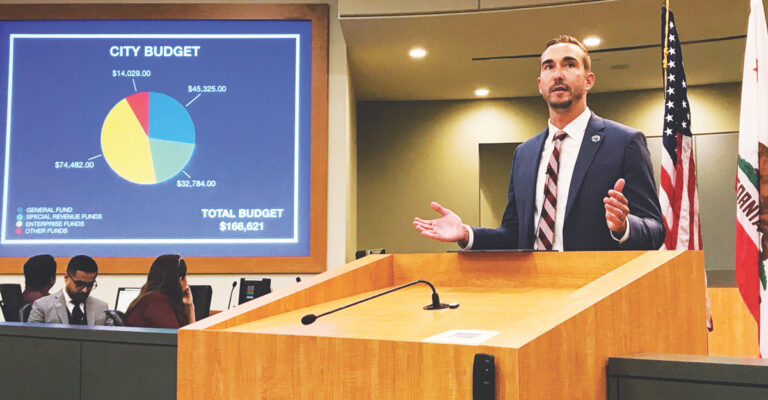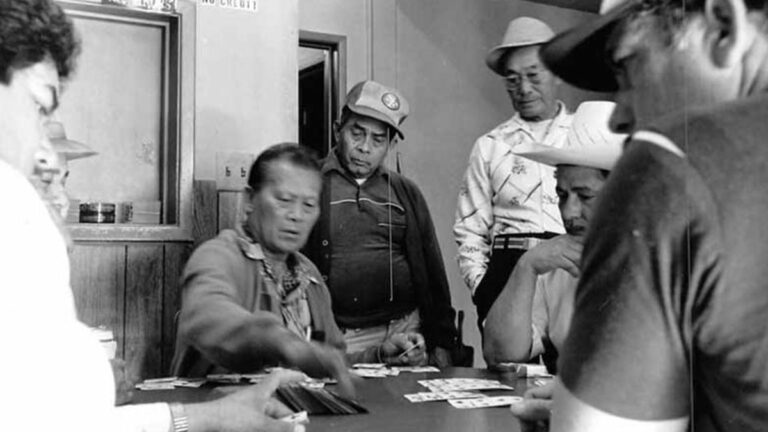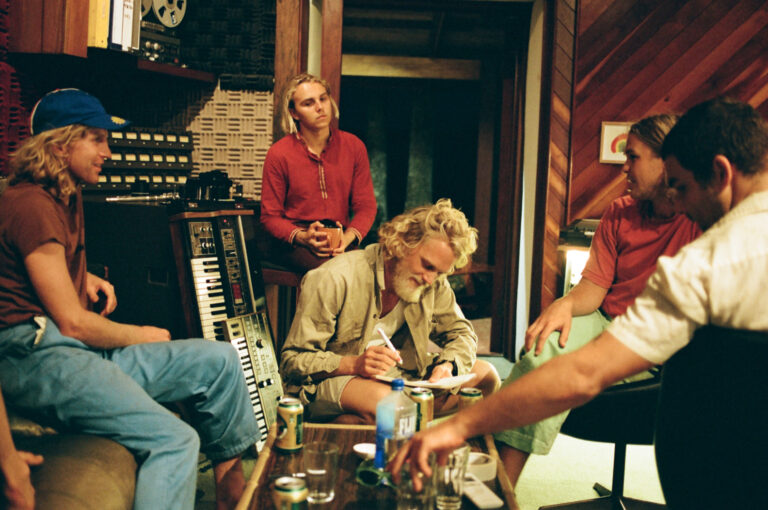ARTS AND MUSIC
ALDOUS HARDING WITH H. HAWKLINE Avant-garde folk singer-songwriter Aldous Harding recently described what it’s like to be asked about the meaning of her music. She told Pitchfork it’s like being “interviewed about a robbery,” she said. “I didn’t see their face, and I wanna help, but I don’t really remember how it felt.” Harding’s fourth record, Warm Chris, follows that ambiguous path, riding into a liberating world of her creation where nothing is direct, everything is somewhat abstract, and stories avoid conventional plotlines like Superman and kryptonite. These are impressionistic paintings translated into ghostly murmurs that bring many of Harding’s errant characters to life. This music is what the world could use right now: intentional without irony. Harding’s bandmate, multi-instrumentalist H. Hawkline, opens. $31.50 plus fees. Wednesday, Sept. 28, 8pm. Rio Theatre, 1205 Soquel Ave., Santa Cruz. folkyeah.com.
DANIELLE PONDER WITH VILLAGE OF SPACES Danielle Ponder knows what it means to be a soul singer. Like some of the strongest vocalists who came before her—Nina Simone, Roberta Flack and Sharon Jones—it comes from a place that extends deeper than straightforward talent. Ponder culls from the hardship and frustration of her brother’s “three strikes” prison sentence, which first inspired her career as a public defender in Rochester and now serves as that rare something that separates the greatest from the better than great. “I write the songs I need to survive the situations I am in, and these are those songs,” Ponder says of her debut, Some of Us Are Brave. $20/$25 plus fees. Thursday, Sept. 29, 8pm. Moe’s Alley, 1535 Commercial Way, Santa Cruz. moesalley.com.
MARTY O’REILLY “It’s not about where a [song] goes, it’s about the headspace and drive,” Marty O’Reilly told me about a decade ago. O’Reilly has evolved into one of the most versatile musicians because he genuinely understands that. “People like Howlin’ Wolf and John Lee Hooker could play the same chord for five minutes and not have it sound repetitive because their heart is in it.” Over the years, he’s learned to adapt no matter what genre of music he plays; that’s why he’s consistently juggling a barrage of projects. He’s a master songwriter who can also deliver unique takes on classic covers you’ve heard hundreds of times. “The words remain somewhat constant, but the musical context can change entirely,” O’Reilly explained. “A huge part of a person’s voice and identity can uniquely translate a song.” $30/$35 plus fees. Friday, Sept. 30, 7:30pm. Kuumbwa Jazz, 320-2 Cedar St., Santa Cruz. folkyeah.com.
COMEDIANS WITH DISABILITIES ACT One person’s hardship is a comedian’s punchline. In this case, the person and the comedian are the same. In 2010, comedian Michael O’Connell started the group, later joined by Steve Danner and Nina G. O’Connell passed in 2016, but his vision, spotlighting a variety of disabled comedians, lives on. The upcoming lineup of shows includes comedians with dyslexia, dwarfism, OCD, depression, anxiety, PTSD, autism, Tourette’s and more. Headliner Mean Dave weaves his struggles with addiction into his routine. “Not a lot of people know that being an addict in recovery is covered under the Americans with Disabilities Act,” he advocates. Nina G, Loren Kraut, Jackson McBrayer and Tut McCulloh will join Mean Dave in Santa Cruz. $10. Saturday, Oct. 1, 7:30pm. Greater Purpose Brewing, 21517 E. Cliff Drive, Santa Cruz. comedianswithdisabilitiesact.com.
OLIVER TREE PRESENTS COWBOY TEARS: ONE LAST RIDE WITH JAWNY AND HUDDY Internet-based vocalist, producer, writer, director and performance artist Oliver Tree saw a fork in the road, and he took it. The Santa Cruz native appeared out of nowhere and has suddenly made his way to one of this year’s headliners at Austin City Limits alongside Pink and the Red Hot Chili Peppers. Tree’s world is freaky; it might even scare some, but it’s screwy enough to turn social media’s collective head. “Unafraid to make you laugh, cry, think profoundly or feel completely uncomfortable for the length of a 4-minute music video, he is on the road to developing his blueprint for packaging and marketing pop culture in the internet era.” $99.50. Saturday, Oct. 1, 8pm. Santa Cruz Civic Auditorium, 307 Church St., Santa Cruz. santacruztickets.com
‘THE GIRL CAN’T HELP IT: TRANS PORTRAIT FILMS AT THE DAWN OF THE SEXUAL REVOLUTION’ Dirty Looks has dug deep into documents of trans history to assemble a program of archival trans portrait films from 1970s experimental cinema, activist videos and personal portraiture. Spanning an early decade of production, illuminating (lost?) queer histories and liminal spaces across America, The Girl Can’t Help It showcases poignant testimonials and early rhetoric of trans-femme ideation. $5/$10. Saturday, Oct. 1, 8:30pm. Indexical, 1050 River St. #119, Santa Cruz. indexical.org.
THE FRONT BOTTOMS WITH THE JOY FORMIDABLE AND MOBLEY
The Front Bottoms’ “Grandma EP Series” began with Rose, a 2014 EP honoring drummer Mat Uychich’s late grandmother, Ann. A tribute to guitarist Brian Sella’s grandmother followed in 2018. A few weeks ago, the third installment in the series, Theresa, was released. The Woodcliff Lake, New Jersey duo sing songs about ordinary people—and everyday situations like living in your parents’ basement—through a folky, pop-punk filter. Hey, the approach still works for the fellow Jersey musician who goes by “the Boss.” Meanwhile, Welsh rockers the Joy Formidable return with Into the Blue; the band’s fifth record is laced with memorable melodies, hard-hitting rhythms and a dollop of shoegaze that’s a welcome addition to the trio’s sound. $30/$35 plus fees. Tuesday, Oct. 4, 7:30pm. The Catalyst, 1101 Pacific Ave., Santa Cruz. catalystclub.com.
BABE RAINBOW WITH SEVENTIES TUBERIDE “Retro music sets a good scene for atmosphere, like cooking onions,” the Babe Rainbow lead singer Angus Dowling said ahead of their “Earth Is an Egg, Don’t Frack It” tour in 2019. The Aussie freak-folk group’s “Many Moons of Love” is the ideal scene-setter for a sunny beach day on strong acid. Think Donovan meets the Mamas & the Papas with a scary interlude that eventually returns to breezy bliss after some positive self-talk. The Byron Bay foursome has made some noteworthy fans, including Jaden Smith, who appears on “Your Imagination,” Babe’s first single off their 2021 record, Changing Colours. $22/$25 plus fees. Sunday, Oct. 2, 8pm. Moe’s Alley, 1535 Commercial Way, Santa Cruz. moesalley.com.
OM WITH ZOMBI Stoner metal, doom, psych rock, desert—whatever label is attributed to Om, one thing has remained unchanged throughout their 20-year tenure: their music is driven by spirituality, initially derived from Hinduism. Bassist Al Cisneros, drummer Emil Amos and keyboardist Tyler Trotter find influence in the band’s namesake. According to the dean of the Kripalu School of Yoga, Yoganand Michael Carroll, the sound “om” represents “the natural vibration of the universe.” Expanding on the outfit’s nebulous description, they unleash a canister of experimental instrumentation—with lyrical agility—that erupts into extended grooves throughout one of their fan favorites, Advaitic Songs. $25/$29 plus fees. Tuesday, Oct. 4, 8pm. Felton Music Hall, 6275 Hwy 9, Felton. feltonmusichall.com.
COMMUNITY
BBQUEER FEST 2022 Tannery World Dance & Cultural Center and Motion Pacific Dance present the second-annual celebration of “Black, Brown and Queer live art in Santa Cruz,” and there’s a lot planned. From a night of “Black, Brown and BurlyQ artistry, entertainment and excellence” to a Salsa workshop with Monica Santana, followed by an open dance session where you’ll be able to try out all those newly learned Salsa moves. The annual event directly responds to the County of Santa Cruz’s declaration that racism is a public health crisis. Most events are free (donations appreciated). Thursday, Sept. 29 through Sunday, Oct. 2. For event information and RSVP, visit bbqueerfest.com.
TIM BRAUCH FOUNDATION SKATEBOARD BOWL CONTEST The Tim Brauch Foundation Bowl Contest is happening in Santa Cruz for the first time since 1999. The World Cup Skateboarding event attracts pros and legends from all over; plus, youngbloods hoping to score the $35,000 prize—and bragging rights. But the Bowl Contest is about much more; it’s about bringing people together through a shared love for skateboarding. The contest doubles as a fundraiser for skateboard summer camp scholarships to the renowned Woodward West. There will be a beer garden provided by Nubo Brewery, which will release its Tim Brauch beer, Super Nova. Additionally, the assortment of live entertainment on tap includes Steve Caballero’s Urethane, Pacific Arts Complex Dancers, the Ukulele Club of Santa Cruz and Santa Cruz High Drumline. Made Fresh Crew artists Scotty Greathouse and Taylor Reinhold will also be on hand. Free. Saturday, Oct. 1, and Sunday, Oct. 2, 9am (practice begins); the event runs until 6pm on both days. Ken Wormhoudt Skate Park, 299 San Lorenzo Blvd., Santa Cruz. Email do*@***k8.com to register. wcsk8.com.
GROUPS
WOMENCARE ARM-IN-ARM This cancer support group is for women with advanced, recurrent or metastatic cancer. The group meets every Monday and is led by Sally Jones and Shirley Marcus. Free (registration required). Monday, Oct. 3, 12:30pm. WomenCare, 2901 Park Ave., A1, Soquel. 831-457-2273. womencaresantacruz.org.
OUTDOORS
WILDER RANCH STATE PARK GROUND TOURS In 1896, this innovative dairy ranch was home to a water-powered machine shop. There was a lot of invention in the barns and historic buildings that pepper Wilder Ranch. During the hour-long tour, you’ll get to see it all. $10. Saturday, Oct. 1, and Sunday, Oct. 2, 1-2pm. Wilder Ranch State Park, 1401 Coast Road, Santa Cruz. thatsmypark.org.

























